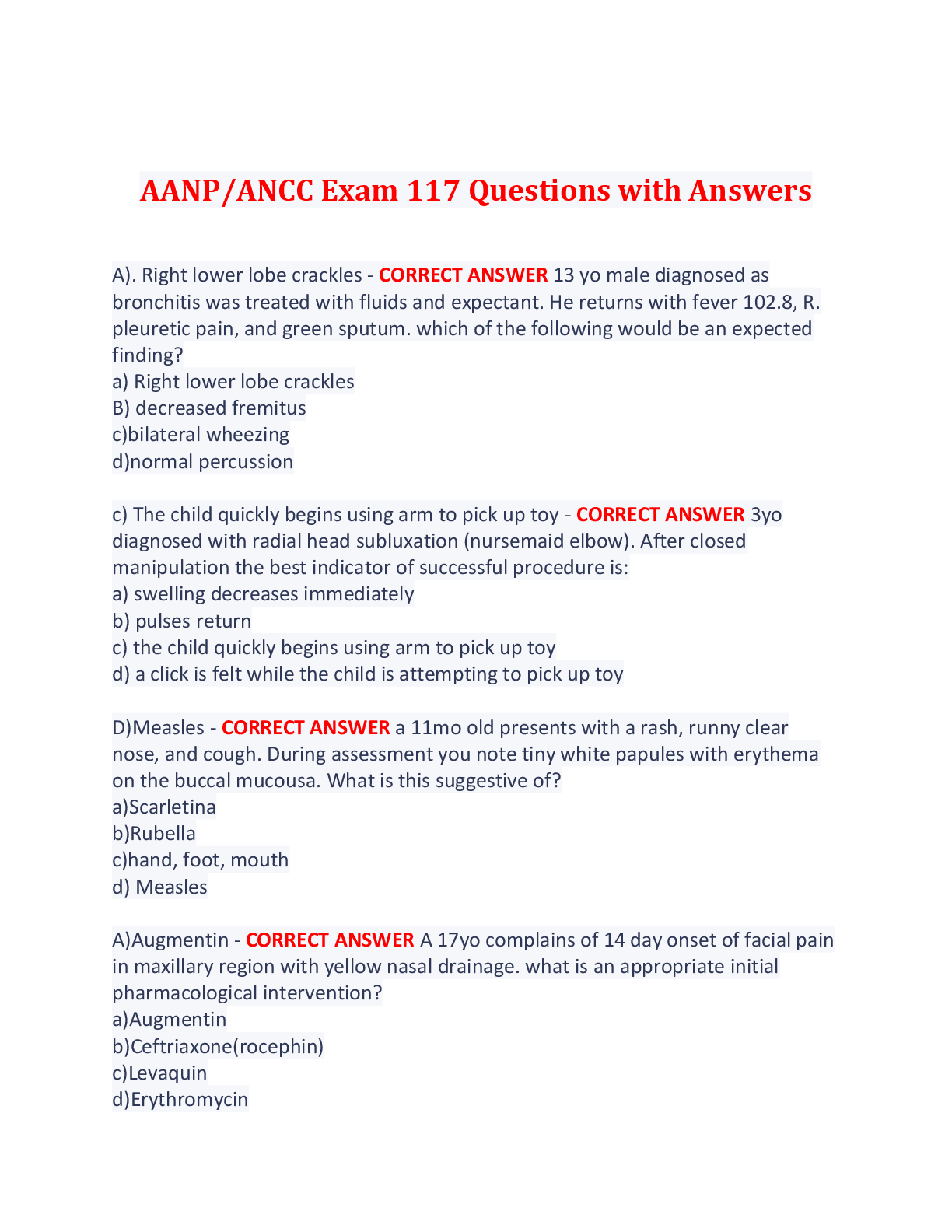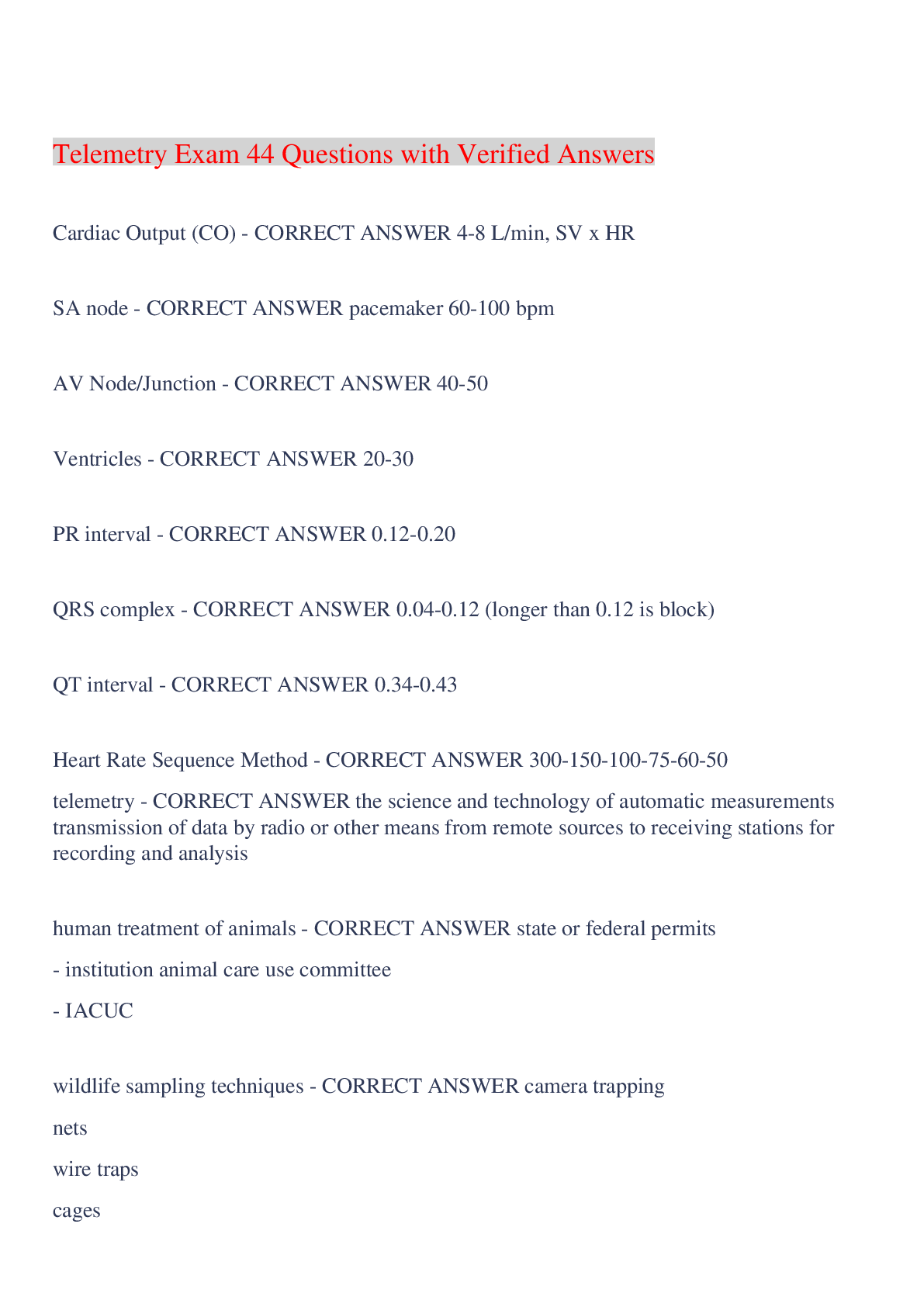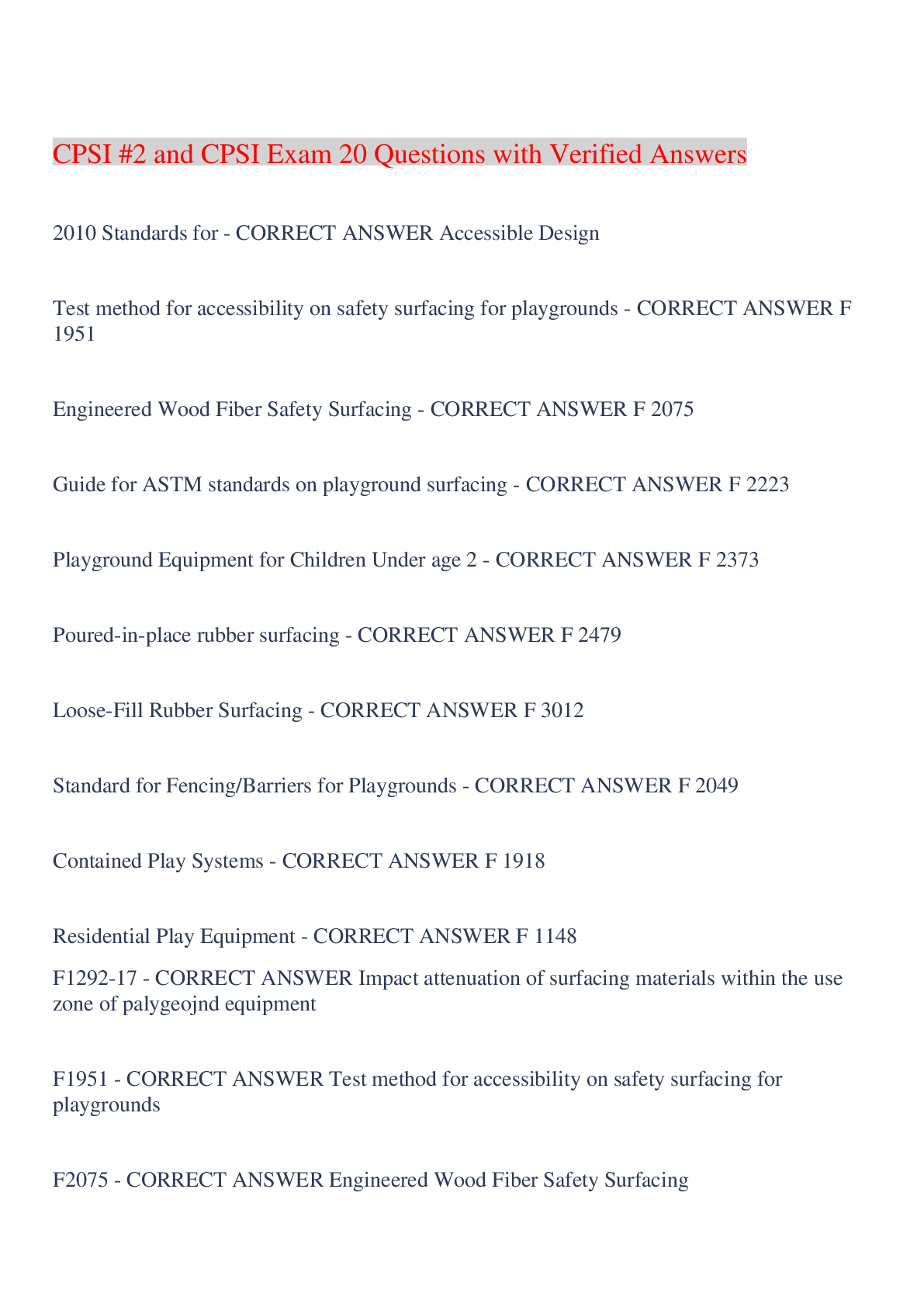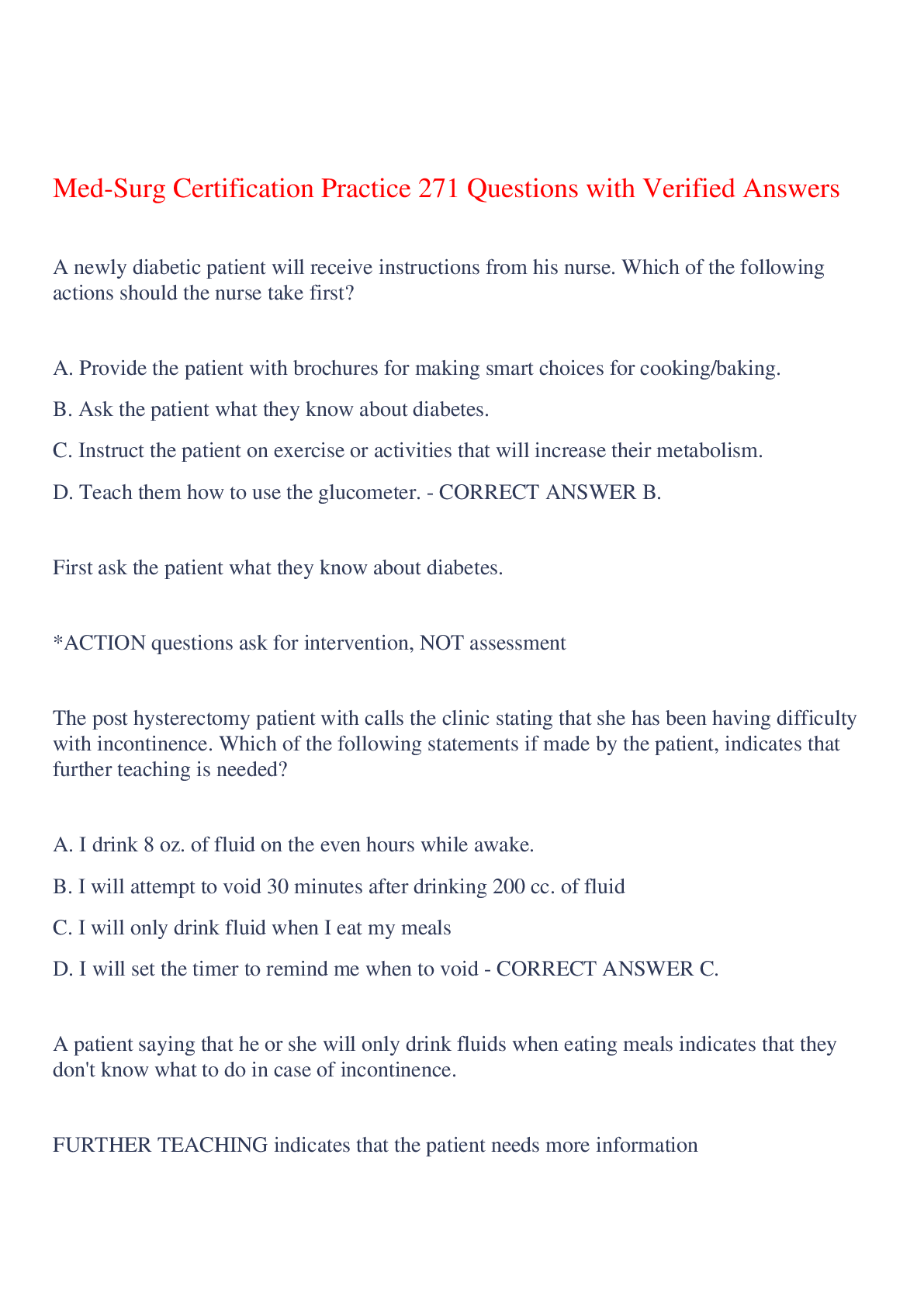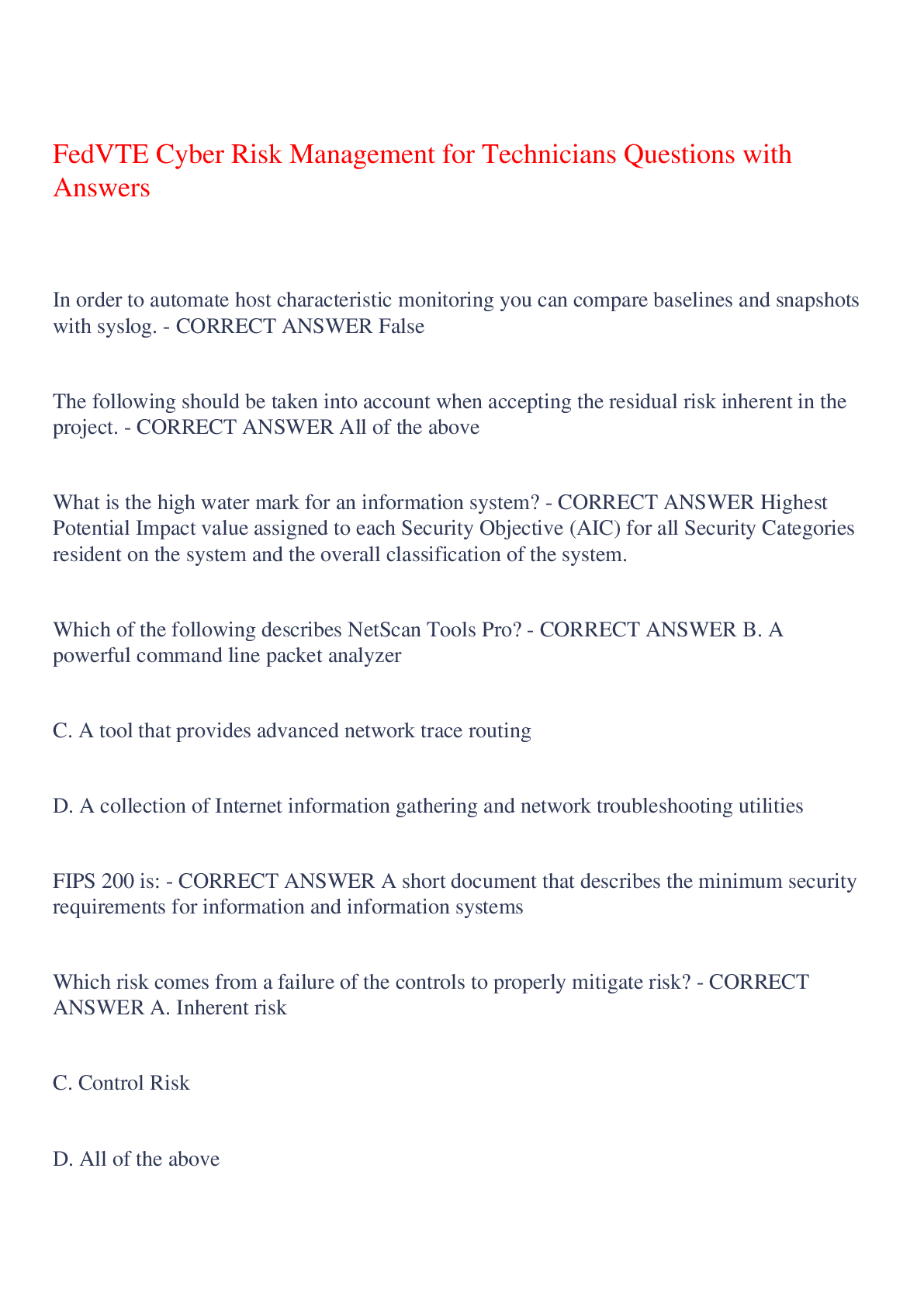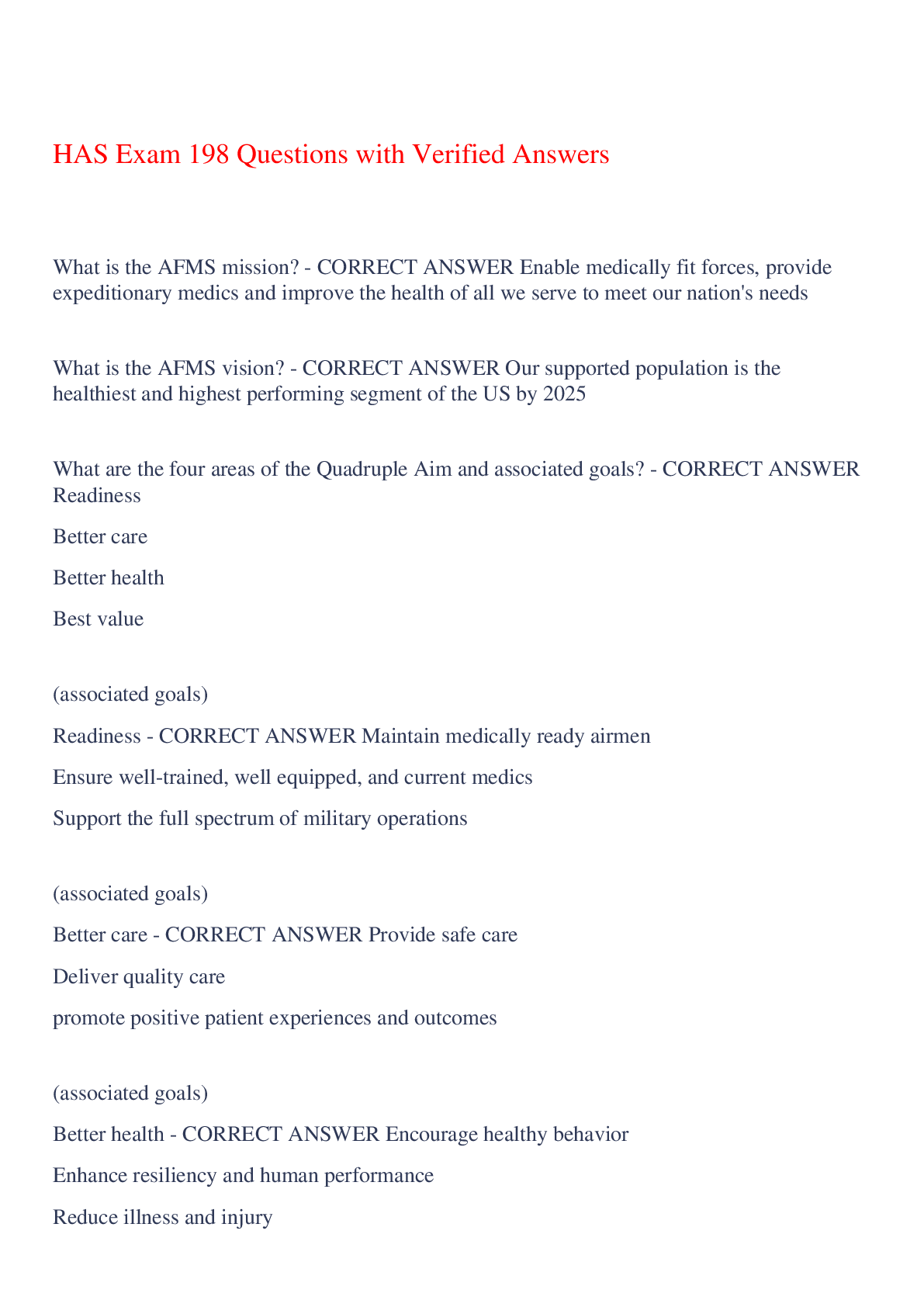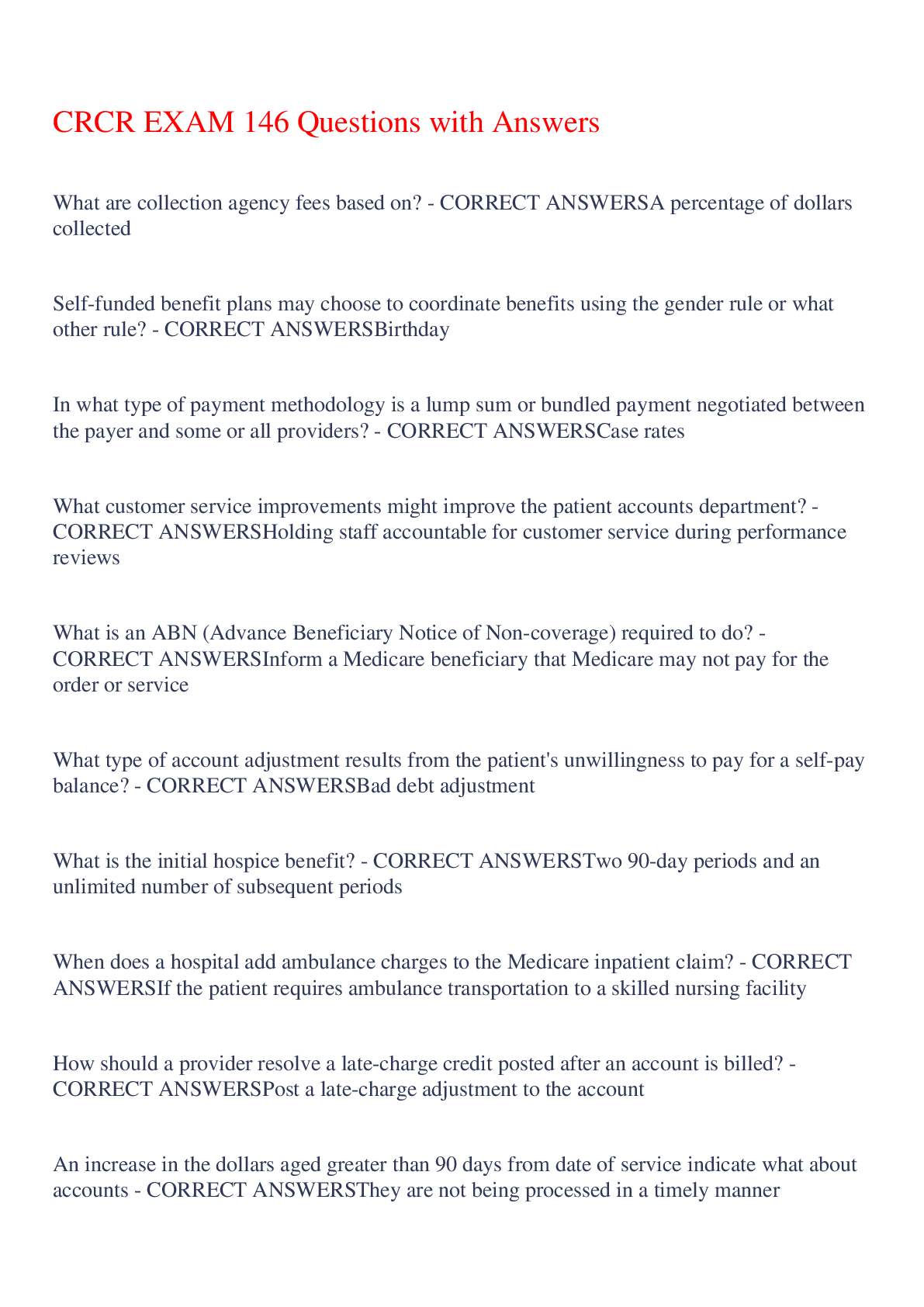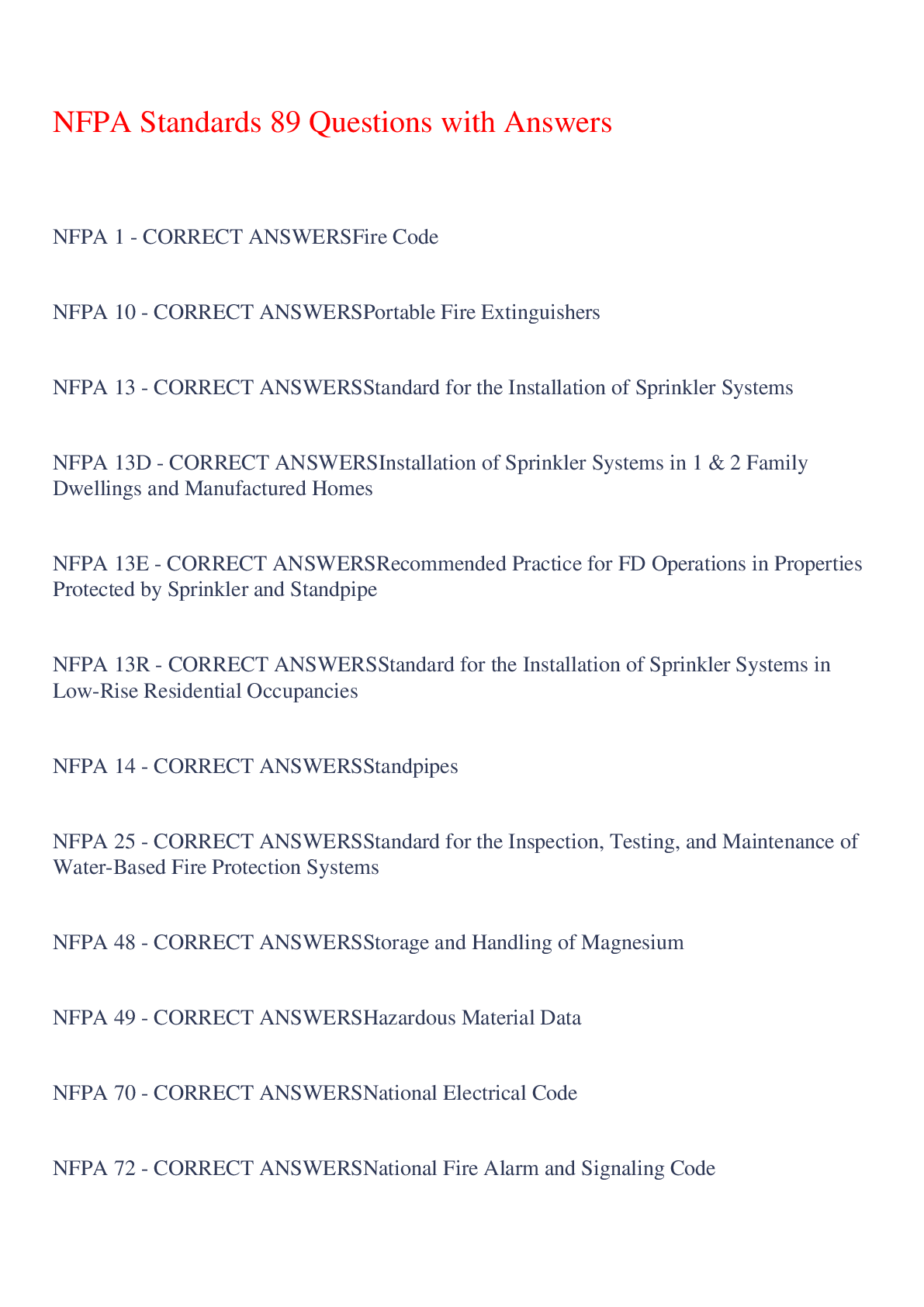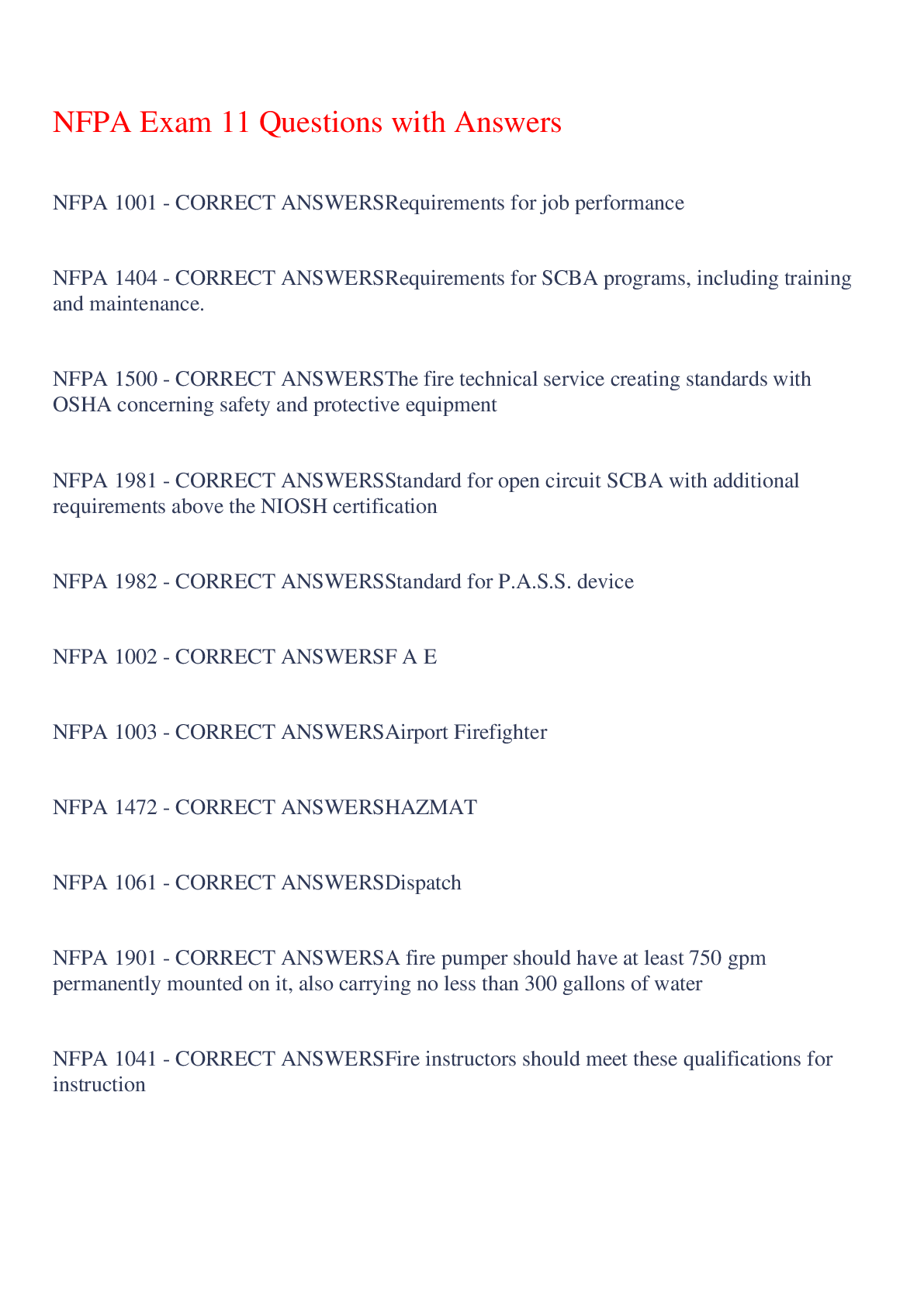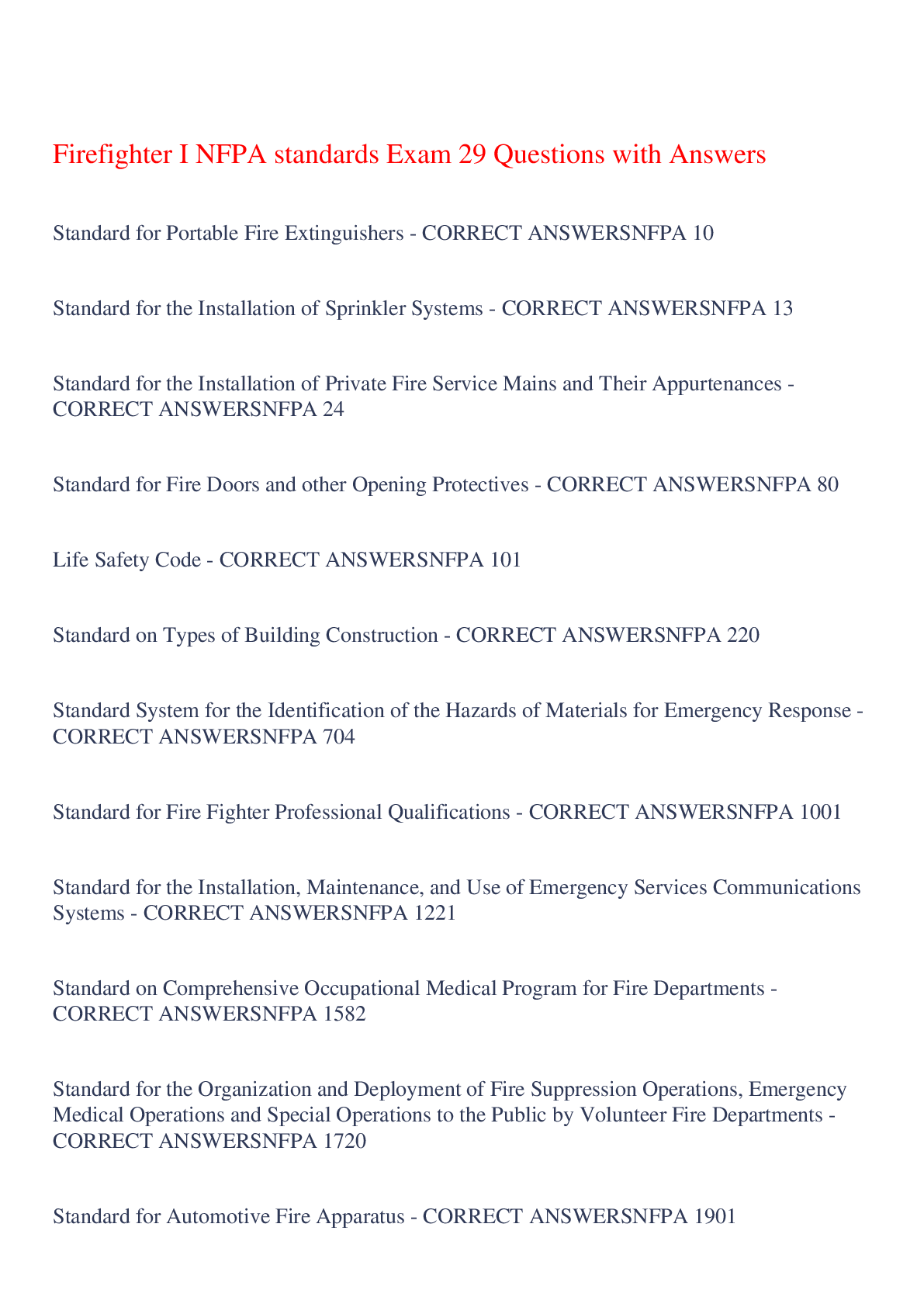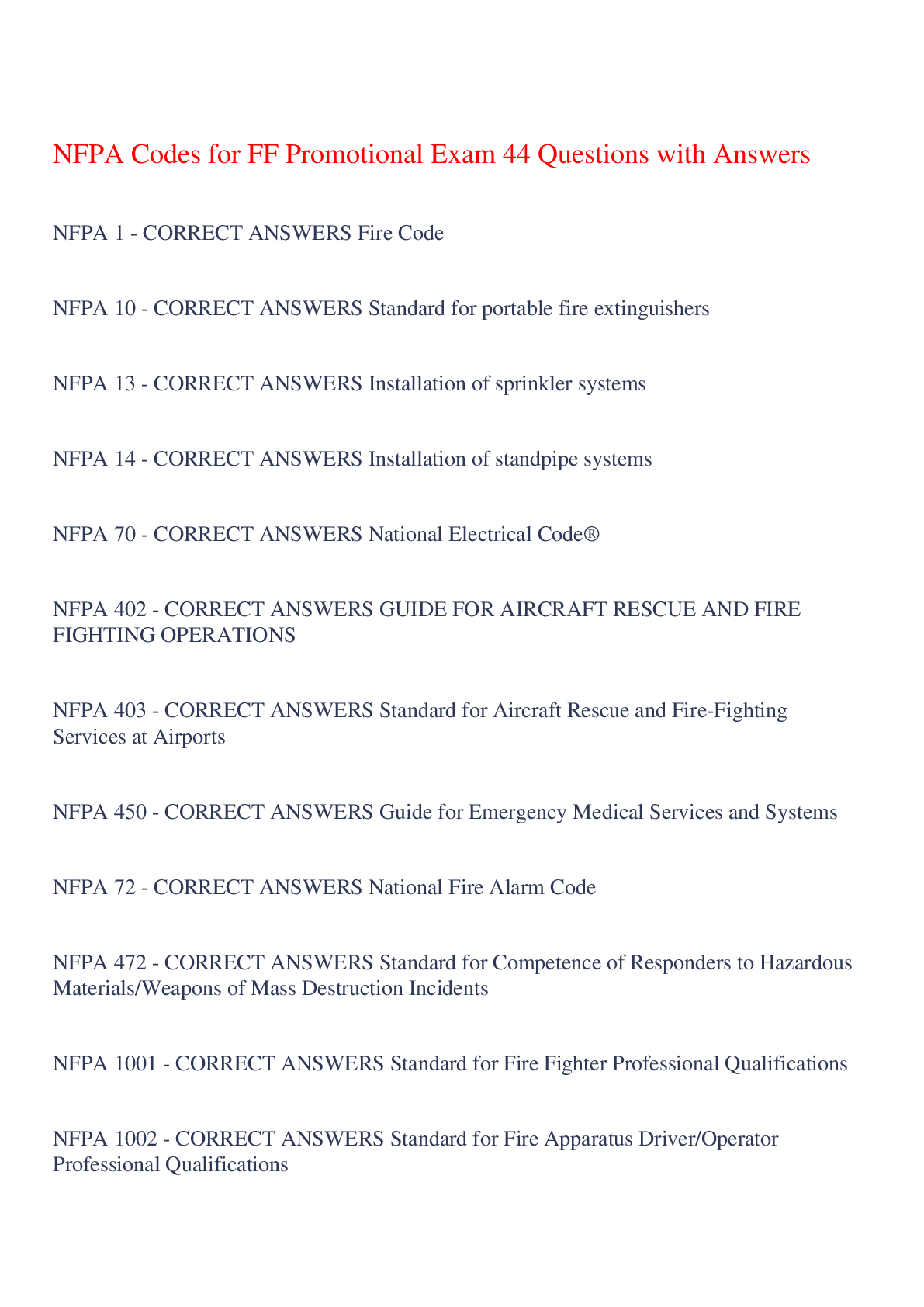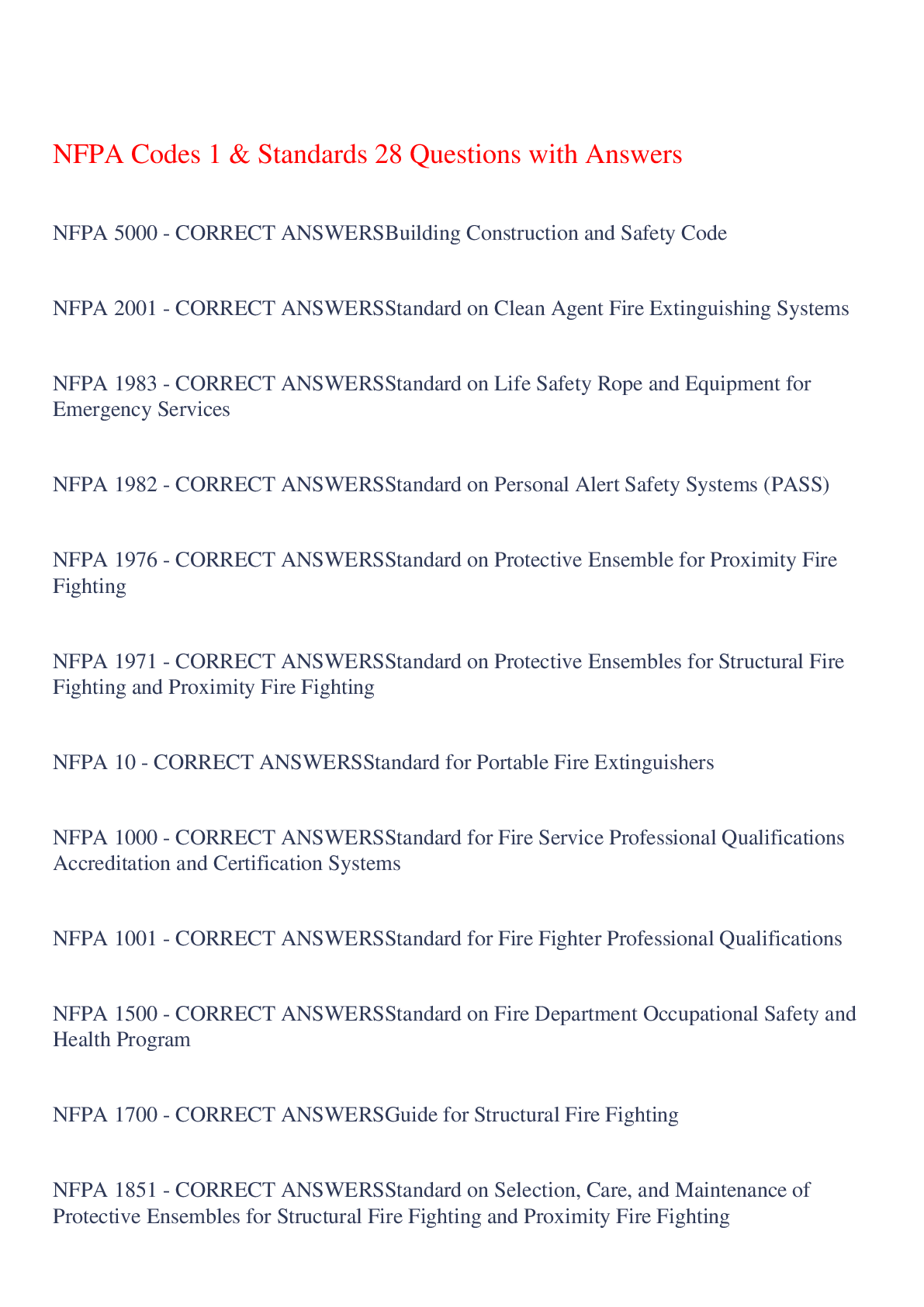NR 200 - Test #1|36 Questions with Answers,100% CORRECT
Document Content and Description Below
What is soil? - CORRECT ANSWER -the link between the living and the non-living -the unconsolidated material that occupies the earth's surface and supports plant life What are the 5 ways that soil ... supports the living? - CORRECT ANSWER 1) medium for plant growth: insulates from severe cold 2) system for water supply and purification: soils acts as filter for toxins 3) recycling system for nutrients and organic wastes: composting 4) habitat for soil organisms: more of them = lots of nutrients in your soil 5) engineering medium: bring in sandy soil to help get good compaction for concrete house foundation What are the four major components of soil? - CORRECT ANSWER Minerals 45% Water 20-30% Air 20-30% Organic Matter 5% Minerals come from and the source for... - CORRECT ANSWER -rocks that are broken down into particles that we call soil -source of 13 of the 16 nutrients needed for plant growth Air is required for... - CORRECT ANSWER -the roots need O2 for respiration -organisms need O2 as well Water is need to... - CORRECT ANSWER -make a soil solution to dissolve the minerals held in the soil particles; makes IONIC solution Organic Matter comes from and is used for... - CORRECT ANSWER 1) From once living organisms 2) Decaying and making their minerals available again 3) Improves water holding capacity 4) Humus is the longer lasting material that is responsible for this water holding ability, colloidal. What 6 things does the soil need to provide for the plant to grow successfully? - CORRECT ANSWER A. Anchorage B. Oxygen C. Water D. Temperature Moderation E. Nutrients F. Free from Harmful Organisms A. Anchorage - CORRECT ANSWER 1) Needed to allow the plant to have as many leaves positioned to accept sunlight 2) Keep plant in place to receive water and minerals B. Oxygen - CORRECT ANSWER 1) Needed to allow for respiration 2) Needed for microorganisms to flourish C. Water - CORRECT ANSWER 1) Almost all the water the plants need comes from the soil 2) Also important for the microbial action in the soil 3) Important for nutrient absorption 4) pH: the degree of alkalinity or acidity of the soil solution or soil pH range - 1 - 7 - 14 a logarithmic relationship D. Temperature Moderation - CORRECT ANSWER 1) The ability of the soil to insulate itself from the extreme hot and cold of the air above it. 2) Allows the roots to grow and an environment favorable to microorganisms E. Nutrients - CORRECT ANSWER -16 essential for plant growth 1) Only C,H and O are taken in by the plant from the atmosphere the other 13 are from the soil IMPORTANT: Ni, Co, Na and Si 2) Root hairs are the plant structure responsible for bring in the nutrients and water. 3) The elements must be brought into the plant via ionic solution that is, ions dissolved in solution. These ions go into solution from the colloids in the soil. Pg 25 What are the 5 main soil horizons? - CORRECT ANSWER O- Organic Layer A- Topsoil B - Sub Soil or TRANSITION LAYER or Zone of Accumulation, Illuviation C- Parent Material R-Bedrock O- Organic Layer - CORRECT ANSWER i - under decomposed organic material a - organic material highly decomposed A- Topsoil - CORRECT ANSWER -the most productive soil p - plowed or other cultivated disturbance (man made) 1) Best for nutrient holding, water capacity, micro-organisms 2) The most important soil profile for plant life B- Sub Soil - CORRECT ANSWER m - cemented zone usually silicates or calcium g - strong gleying C. Parent Material - CORRECT ANSWER broken down but not subject to the soil forming properties as the above solum (A&B) and not massive in structure as R- Bedrock What is soil texture and how many are there? - CORRECT ANSWER -the amount of sand, silt, and clay in the soil there are 12 What are the size of the particles of sand, silt, and clay? - CORRECT ANSWER Sand: 2 - .05 mm Silt: .05 - .002 mm Clay: less than .002 mm What is soil structure? - CORRECT ANSWER -the way these smaller aggregates form larger particles What 4 factors interact for form soil or the pedosphere? - CORRECT ANSWER Atmosphere - soil air Biosphere - organic matter Hydrosphere - soil water Lithosphere - soil particles What is soil used for? - CORRECT ANSWER 1) Agriculture 2) Non-Agriculture a) Recreation b) Foundations c) Waste disposal d) building materials 3) Land use of the future???? What are the 5 soil forming factors? - CORRECT ANSWER A. Parent Material Origins B. Climate C. Biota (Living Organisms) D. Topography E. Time Igenous Rock - CORRECT ANSWER ¼ of the earth's surface solidification of molten rock a) Granite - intrusive i. Quartz - weathers to form sand ii. Feldspar biotite - form clays b) Basalt - extrusive Sedimentary Rock - CORRECT ANSWER a great majority of the earth's surface, readily breaks down into soil. Consolidation by silicates and carbonates cementing together a) Limestone - organic marine animal formation b) Sandstone Metamorphic Rock - CORRECT ANSWER - rock that is heated under pressure and changes-generally resists weathering. a) Marble b) Slate c) Gneiss d) Talc- which is ground into powder. e) Graphite- used in pencils and lubricants. f) Serpentinite What are the four factors in Climate forming soil? - CORRECT ANSWER heat water freezing wind What are the 3 factors of the Biota that form soil? - CORRECT ANSWER 1) Plants * Accumulation can form peat bogs, Moss Peat, Herbaceous peat, Woody peat and sedimentary peat 2) Micro-organisms * Animals turning the soil - pedoturbation 3) Macro-organisms What are the 3 factors of topography that form soil? - CORRECT ANSWER 1) Moving soil by water and gravity 2) Low - accumulate salts, if saturated then reduced om degradation 3) Steep areas are never allowed to develop the soil profile as the unconsolidated material leaves the site. What are the modes of soil transportation and what are the fancy names for each? - CORRECT ANSWER a) Glacial Ice - Moraine b) Wind - Eolian c) Water - Stream -Alluvial Lake - Lacustrine Oceans - Marine d) Gravity - Colluvium What are the four soil transformation processes? - CORRECT ANSWER a) Transformations b) Translocations c) Additions d) Loss a) Transformations - CORRECT ANSWER i) The physical and chemical changes that occur in the soil - Degradation of minerals while forming silicate clays - Degradation of OM and formation of humus and organic acids - Also the changing of aggregates b) Translocations - CORRECT ANSWER i) Movement of materials by water downward when in abundance and upwards when the absence of surface water. c) Additions - CORRECT ANSWER i) OM ii) Fine particles wind depostion d) Loss - CORRECT ANSWER i) Leaching ii) Erosion iii) OM [Show More]
Last updated: 2 years ago
Preview 1 out of 7 pages
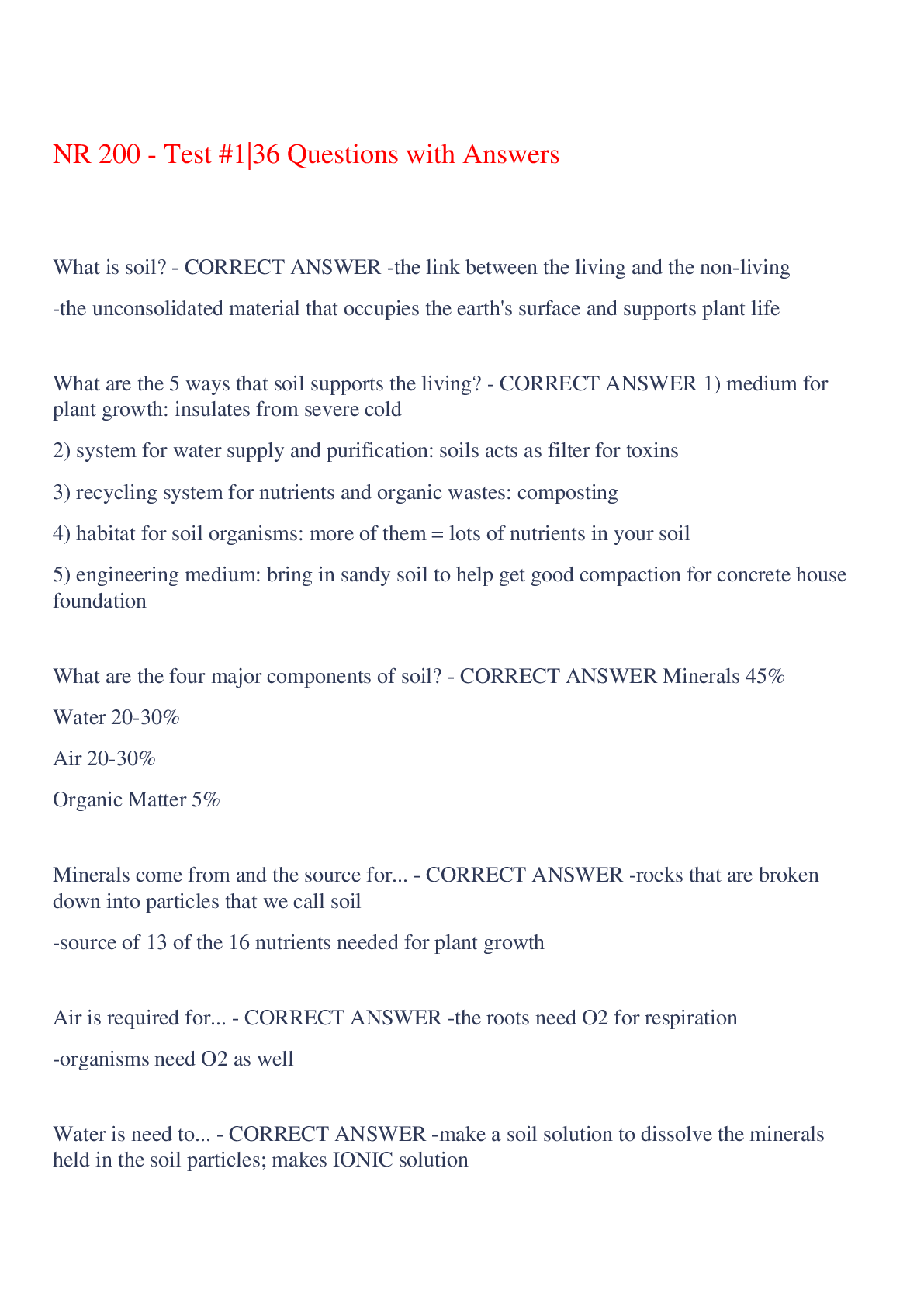
Buy this document to get the full access instantly
Instant Download Access after purchase
Buy NowInstant download
We Accept:

Reviews( 0 )
$8.00
Can't find what you want? Try our AI powered Search
Document information
Connected school, study & course
About the document
Uploaded On
Jul 09, 2023
Number of pages
7
Written in
Additional information
This document has been written for:
Uploaded
Jul 09, 2023
Downloads
0
Views
52


